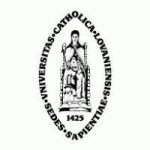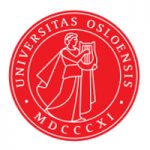项目介绍
JP Disciplines/WHOI and MIT Department Organization
Applied Ocean Science and Engineering (AOSE)
Applied Ocean Physics and Engineering (AOPE) at WHOI plus Civil and Environmental Engineering (CEE), Electrical Engineering and Computer Science (EECS), Mechanical Engineering (Mech E), or Aeronautics and Astronautics (Aero-Astro) at MIT
Biological Oceanography (BO)
Biology at WHOI plus EAPS (Earth, Atmospheric, and Planetary Sciences), CEE, or Biology at MIT. Prospective students should discuss with potential advisors or the Biology Education Coordinator the best MIT department for their interests.
Chemical Oceanography
Marine Chemistry and Geochemistry (MC&G) at WHOI plus CEE or EAPS at MIT
Marine Geology and Geophysics
Geology and Geophysics (G&G) at WHOI plus EAPS or CEE at MIT
Physical Oceanography
Physical Oceanography at WHOI plus EAPS at MIT
Program Description
The MIT-WHOI Joint Program provides a high quality education leading to an internationally-recognized doctoral degree awarded by both institutions. The Joint Program is organized within five sub-disciplinary areas, each administered by a Joint Committee consisting of MIT faculty and WHOI scientists: Applied Ocean Science and Engineering, Biological Oceanography, Chemical Oceanography, Marine Geology and Geophysics, and Physical Oceanography. Cutting across the Joint Committees are interdisciplinary themes including “climate and climate impacts” and “coastal processes”. In addition to the cross-cutting themes, many students choose research topics which overlap two or more of the sub-disciplines, and Joint Program leadership works to support and accommodate students with interdisciplinary interests (see interdisciplinary statement and thesis examples). Thesis committees involving biologists and engineers, chemists and geologists, physical oceanographers and biologists are common.
The Joint Program offers a master’s degree program for U.S. Naval Officers, and more than 85 officers have received this degree dating back to the first award in 1970. With the exception of the U.S. Naval Officers program, students are not admitted to the Joint Program for a Master’s degree. However, a Master’s degree can be awarded in all programs on the way to a doctoral degree or as a terminal degree.
The Joint Program is an ocean science program in the broadest sense. Student research projects extend beyond ocean science into earth science, hydrology, glaciology, marine conservation, and environmental chemistry, to name a few. Coursework in marine policy is not mandated by any of the Joint Committees, although there are opportunities to take policy courses at MIT and Harvard. In addition, WHOI has a Marine Policy Center, and its faculty lead informal seminars on marine policy as well as serve on thesis committees.
Joint Program students have access to courses, programs and resources at one of the top oceanographic research institutions in the world (WHOI), one of the top research universities in the world (MIT), and they have the opportunity to take courses at Harvard. In addition to seminars and lectures by visiting scientists from all over the world, students can expand their intellectual horizons by taking courses or participating in programs well outside their main area of focus. For example, MIT’s Technology and Policy Program housed in the Engineering Systems Division offers courses such as Global Environmental Science and Politics.
The Joint Program is committed to providing five years of tuition and stipend support to every student who is admitted, assuming satisfactory progress in the program. The Joint Program also has funds to help students attend scientific meetings, conferences, and special courses and to support student research. The Joint Program provides transportation options between the two campuses as well as housing at MIT and at WHOI for qualified students.
联系方式
电话: 617-253-1000相关项目推荐
KD博士实时收录全球顶尖院校的博士项目,总有一个项目等着你!






